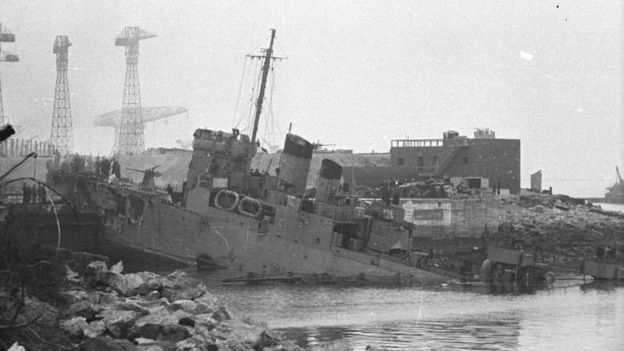


THOMAS FRANK DURRANT
Unlike the other servicemen in this part of the website, Tomas
Durrant does not have a plaque on Farnborough War Memorial.
But he did have a Victoria Cross, which he might have considered
more of an honour. The VC was awarded posthumously in 1945
after he was killed in action, see below.
Spitfires of the Sea
Villagers of Farnborough are still familiar with the occasional Spitfire flying over with its distinctive sound of the Merlin engine. On such occasions one cannot help but scan the sky to spot these heroes of the Second World War still flying over us. Yet the village also has a link with the Spitfires of the sea who celebrate their centenary anniversary this year.
Each was lightly armed, with one cannon and two Lewis machine guns and maybe one or two torpedoes, or depth charges depending on its role.
However, it was in 1942 that the Spitfires of the sea or
MTBs, as us Victor comic readers knew them, came to fame.
The St. Nazaire Raid
The successful invasion of France provided Germany with seaports on the Atlantic coast and in particular at St Nazaire, the biggest dry dock in the worldThis meant that their battleships, such as the Bismarck, the Tirpitz or the Scharnhorst could be repaired and return to the Atlantic should the need arise. Therefore, a plan was devised by the British command to destroy the dry dock using in principle the largest torpedo possible to ram the dock and explode causing devastation around the port. This large torpedo was the HMS Cambeltown, a former First World War destroyer purchased from the USA as part of our war trade agreement, which was to be escorted into the attack by 18 MTBs. On board the ship and MTBs were both Naval and Commando personnel.
Their wooden framework did not offer much protection once a searchlight picked them out. As a consequence, once they were discovered the journey along the River Loire became a nightmare, with many of the MTBs being hit and for the soldiers on board the wooden structure providing no defence against the bullets passing through the boat. All that they could do was to use the Lewis guns to silence the enemy or better still put the searchlights out of action.
On board MTB 306 a sergeant persisted in doing just that. This was Sergeant Thomas Frank Durrant, of Green Street Green, Farnborough. He had joined the army in 1937 and had served in Norway in 1940 before volunteering to join the Commando’s. Now he was defending his boat against the German onslaught even though he had been hit. His tenacity to fight despite the overwhelming odds drew the attention of a German destroyer situated in the river, which began to fire upon the boat. As the destroyer drew closer the MTB was called on to surrender, but Sergeant Durrant continued to fight on.
Eventually, the boat was boarded and those still alive taken as prisoners. This included Sergeant Durrant, but owing to wounds in most parts of his body, he sadly died. Nevertheless, his defiance had been noted, and the captain of the German destroyer tracked down Colonel Newman who had led the Commandos in the raid, but was now a prisoner of war at Rennes, to report on the Sergeant’s bravery. As a consequence, on his release from the prison camp at the end of the war, Colonel Newman reported back to his superiors the bravery of Sergeant Durrant.
In June 1945 Sergeant Thomas Frank Durrant was awarded the Victoria Cross, one of two linked to the St. Nazaire raid. Read More
The award was received by his mother from King George VI at Buckingham Palace in 1946. Later Durrant Way, Farnborough was named after him.
Many villagers may have noted a Thomas George Durrant recorded on the village war memorial. Despite sharing the same surname, records indicate that they were not related.
Bob Donovan

